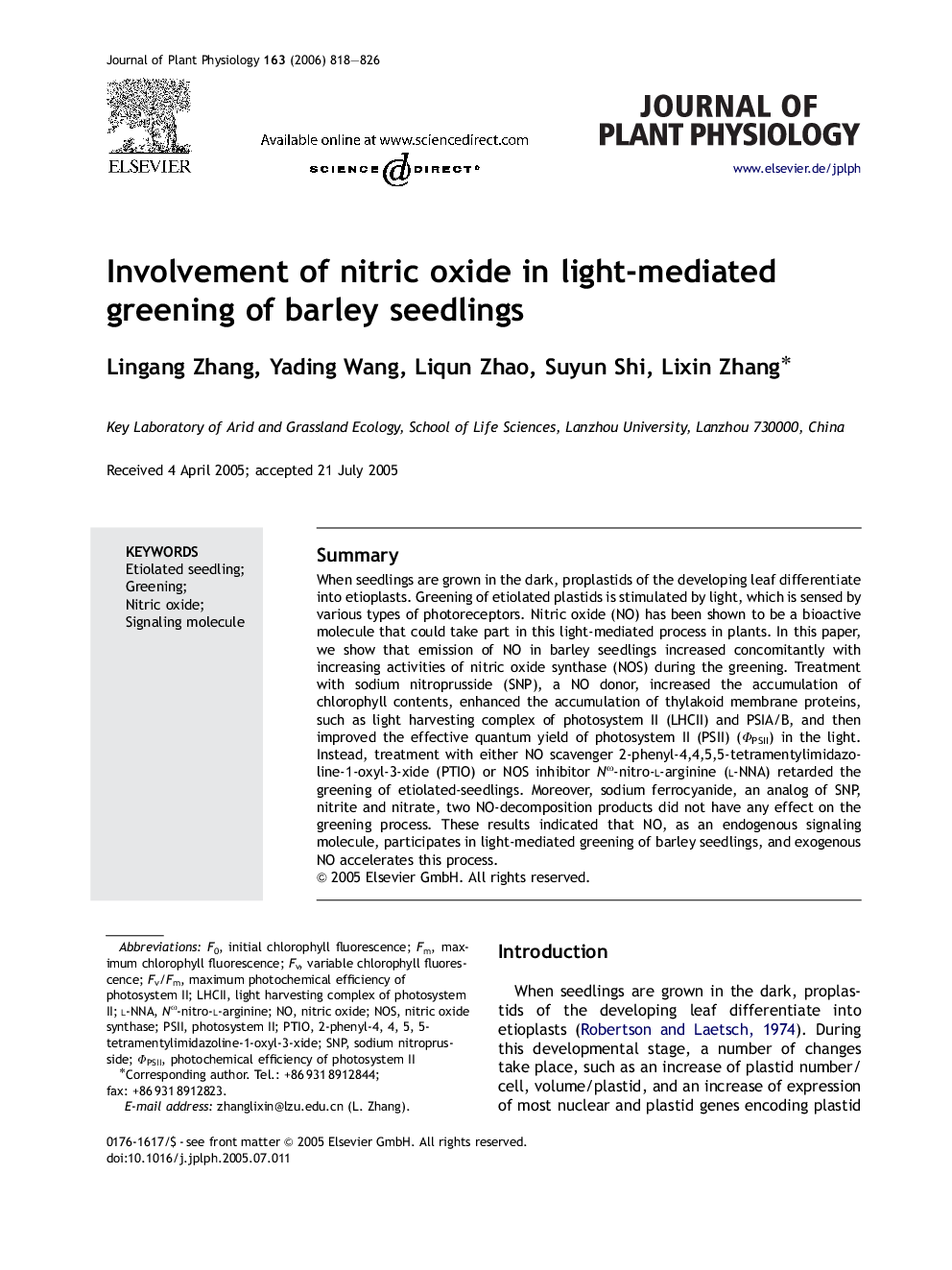| Article ID | Journal | Published Year | Pages | File Type |
|---|---|---|---|---|
| 2057346 | Journal of Plant Physiology | 2006 | 9 Pages |
SummaryWhen seedlings are grown in the dark, proplastids of the developing leaf differentiate into etioplasts. Greening of etiolated plastids is stimulated by light, which is sensed by various types of photoreceptors. Nitric oxide (NO) has been shown to be a bioactive molecule that could take part in this light-mediated process in plants. In this paper, we show that emission of NO in barley seedlings increased concomitantly with increasing activities of nitric oxide synthase (NOS) during the greening. Treatment with sodium nitroprusside (SNP), a NO donor, increased the accumulation of chlorophyll contents, enhanced the accumulation of thylakoid membrane proteins, such as light harvesting complex of photosystem II (LHCII) and PSIA/B, and then improved the effective quantum yield of photosystem II (PSII) (ΦPSII) in the light. Instead, treatment with either NO scavenger 2-phenyl-4,4,5,5-tetramentylimidazoline-1-oxyl-3-xide (PTIO) or NOS inhibitor Nω-nitro-l-arginine (l-NNA) retarded the greening of etiolated-seedlings. Moreover, sodium ferrocyanide, an analog of SNP, nitrite and nitrate, two NO-decomposition products did not have any effect on the greening process. These results indicated that NO, as an endogenous signaling molecule, participates in light-mediated greening of barley seedlings, and exogenous NO accelerates this process.
